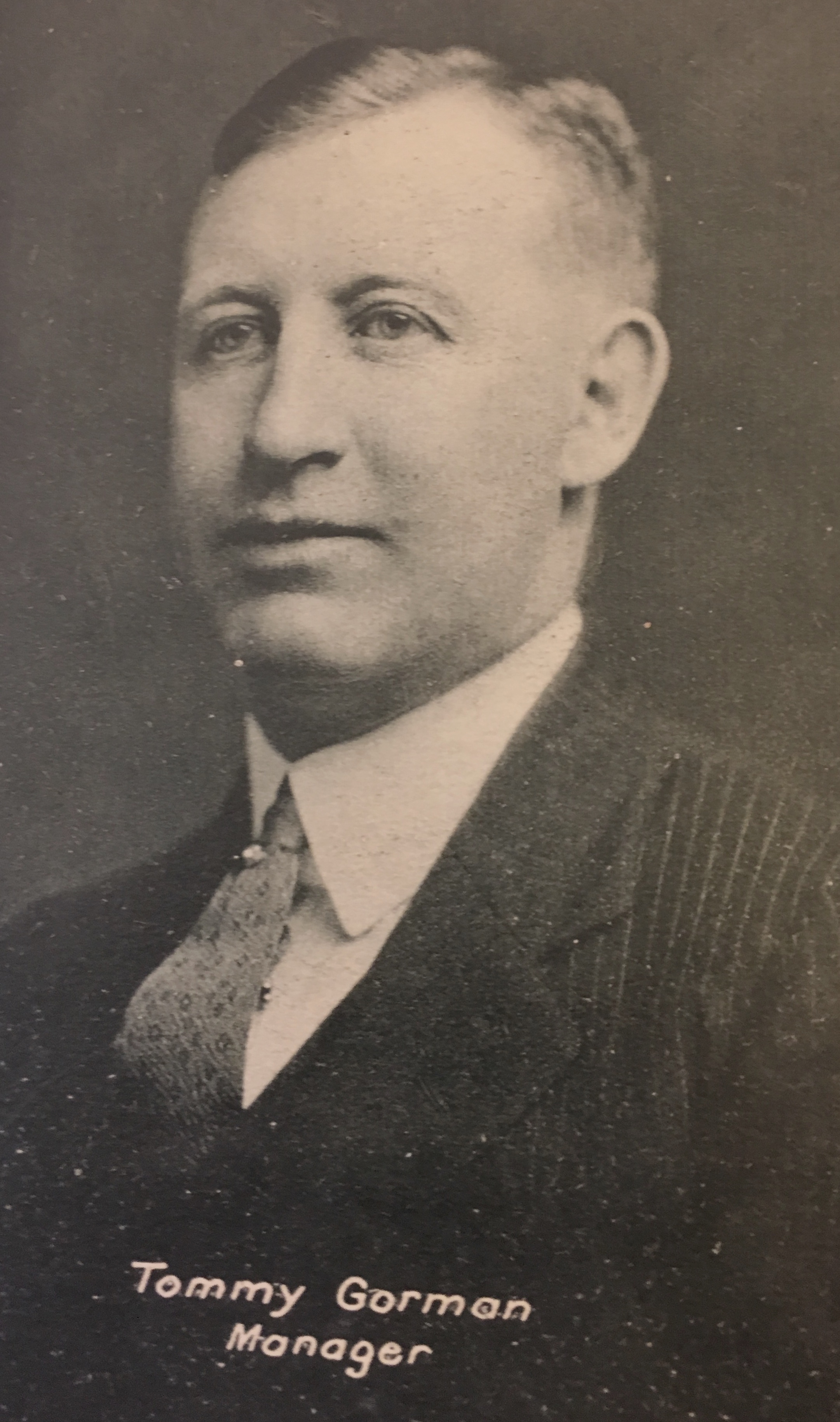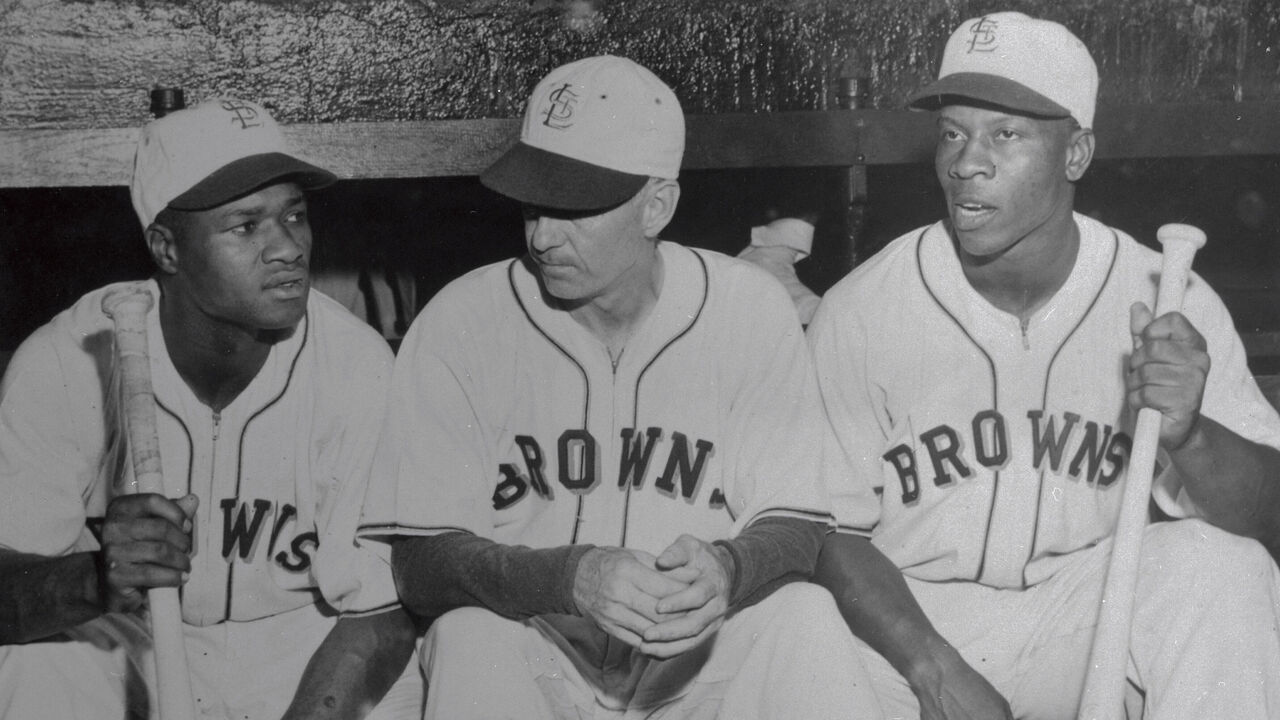The forgotten league that united baseball and hockey icons
In the wake of World War II, dozens of baseball leagues sprung up across all corners of North America to satisfy public clamoring for live entertainment.
One was the Border League, which stoked competition between American and Canadian squads from 1946-51 at Class C, the fifth of six affiliated levels. The loop caught the attention of MLB scouts, and it unified an eclectic mix of stars, from Negro Leagues pioneers to a ringer from the dynastic Montreal Canadiens.
NHL co-founder Tommy Gorman - a former Canadiens general manager - owned and constructed the Border League's strongest team. Doug Harvey manned third base and won a batting championship for Gorman's Ottawa Senators as his Hockey Hall of Fame career took wing. Maurice Richard, the famed Original Six sniper, thought about moonlighting for a summer in the outfield.
Other players were veterans who flooded home from the war to swing a bat and delight rapt crowds.
"They were fit. They were athletes. Some of them played before they left, and now they're coming back and they have nothing to do. They might be working in a factory or something, but they also want to play a sport," said Warren Campbell, a Toronto-based contributor to the Society for American Baseball Research (SABR).
"It was a crazy time for the world, and here are these guys, like so many others across North America, creating a baseball league. They chose four teams in upstate New York, had teams in small-town Ontario and Quebec, and ended up solidifying the league.”
Campbell presented his findings about the Border League at the recent Canadian Baseball History Conference. He also spoke about the league's surprising star power in a phone interview that's been edited for length and clarity.
theScore: In baseball's long history, there are countless defunct minor leagues. What drew you to researching the Border League?
Campbell: SABR is writing a book about the history of Ottawa baseball. I had never heard of the Border League. Just a quick search, and I went: Wow.
This is a league that lasted six years. It had a lot of interesting people in it other than Doug Harvey. Willard Brown is in the Baseball Hall of Fame because of his play in the Negro Leagues. "Home Run" Brown was his nickname, and he was given that name by Josh Gibson, the guy who's considered the greatest home-run hitter of all time. Brown won the Triple Crown twice in Puerto Rico before he ended up playing for Ottawa.
There were a lot of characters, and it was an open chapter that needed to be written.

I'm hoping you can explain the Montreal Canadiens' involvement. What was Tommy Gorman like as a baseball owner, and why did he target Harvey and Maurice Richard as potential players?
Because of his connections to the Canadiens. He had connections everywhere. He was a promoter. He would put on shows and bring in talent. He brought Frank Sinatra to Montreal. As far as sports, he put on boxing and wrestling. He owned a racetrack in Hull, Quebec. He founded the NHL. He was a guy who always had his fingers in things.
The idea of baseball was: He saw an opening. He said, "Ottawa doesn't have a professional team, and there's this new league, so I want to be involved." The first calls he made were to people he knew. He tried to get Bill Dickey, the former Yankees legendary catcher, to manage Ottawa. Dickey said, "No, but I've got a guy, Paul Dean" - who was a famous pitcher for a couple of years (and brother to Hall of Famer Dizzy Dean) - "and he'll come up and manage the team for you."
Gorman contacted people in Montreal. A lot of hockey players were playing baseball in the Quebec league in the summer, just to do something. Maurice Richard was a star center fielder. Richard got injured, so he never did come to Ottawa, but every year, they'd hear the rumors: "Gorman's going to bring Maurice Richard to play baseball in Ottawa."
Doug Harvey just loved sports. He would play anywhere. It was easy to get him, but come September, when it was playoff time for the Ottawa team, Harvey would leave and go to training camp to play hockey. He wouldn't stick around for the playoffs, unfortunately. You'll see the standings: Ottawa always tapped out when it got to the playoffs. That's because their stars were hockey and football players.
Harvey was the first great playmaking defenseman. He won six Stanley Cups in the '50s, plus seven Norris Trophies as his position's standard-setter. What was his baseball skill set?
Superstar, to the point where the Boston Braves, the Brooklyn Dodgers - there are, like, six teams that put in offers to sign him.
To start out, he was not a refined player. He kept his hands noticeably apart and rested his bat on his shoulder. He was too relaxed. He fixed his batting style, which made him into the hitter he became. Doug Harvey was an athlete who could hit a ball, catch a throw, and do everything else. He just didn't really have the coaching until he got to Ottawa. He dominated the league in hitting when he finally got going.
Another Stanley Cup winner, NHL center George Gee, played for the Border League's Kingston Ponies. What did these Original Six players get out of dabbling in baseball?
1940s hockey players played baseball because they could. It was something to do in the summer and they were athletes and they were competitive. They couldn't come home and play PlayStation or watch TV.
The idea of being a multisport athlete in those days was easier. The seasons weren't as long. The responsibility in the offseason was not like it is now, where the players are accountable to the team for 12 months a year. In those days, it was like, "The season's over, go home, and we'll see you at training camp." They were on their own.
Ottawa signed Willard Brown, the great Negro Leagues slugger, after he'd followed Jackie Robinson to the majors in 1947. Manny McIntyre, who skated on hockey's first all-Black forward line, became the first Black Canadian pro ballplayer with the Sherbrooke team. What was their Border League experience like?
Not good. McIntyre was 26 years old when he signed with Sherbrooke. He struggled with the racism in the Border League. Accounts don't say if it was in two-thirds of the league or upstate New York. I don't know where he experienced it. It's never clear as to exact incidents. He just struggled with it.
He only played 30 games. He hit .310. He had arm problems because of a hockey injury. He was a shortstop. He made 30 errors in those 30 games. His struggle with fielding and the racism are the two issues that come up as to why he quit the team.
He didn't quit baseball. At the end of the season, he had a trial with the New York Cubans of the Negro Leagues. He played in an exhibition game with the Cubans at Yankee Stadium. Whatever his issues were physically, they didn’t stop him from continuing to play. I think the issues he was getting with racism were probably more than has been documented.
Brown had played 21 MLB games for the St. Louis Browns. He didn't last long. His Negro League team was the Kansas City Monarchs, who were compensated for every game that Willard Brown stayed on the St. Louis Browns. The Browns decided they weren't going to keep him. But he was the first African American to hit a home run in the American League.
It came up very often that Brown was a relaxed player. If he was bored, he would carry a copy of "Reader's Digest" in his back pocket to read in center field. With Ottawa in 1950, he hit .352. He was 35 years old, and he continued playing until he was 42.

The Toronto Blue Jays took flight in the 1970s. Montreal loved the Expos for decades. How did nearby Ottawa and Kingston once compare as baseball cities?
Ottawa had the Triple-A team of the Expos. Kingston had a team in only one other professional league. (Pauses to find the information.) It was very obscure: In 1888, they had a team in what was called the Eastern International League. They won the league, for what it's worth.
There's not a great history in those cities for professional baseball. By the time of the Border League, it was a big deal to have those teams. There was a lot of excitement. They drew well. After Ottawa's first game ended, the police had four calls asking them to clear the streets of groups of boys who were playing baseball. It captured the imagination of Ottawa people to have a pro team.
What connections or divisions were there between the American and Canadian teams?
There was a quote by Rev. Harold Martin: "The bonds of friendship and better understanding could be cemented further between the USA and Canada through the formation of a baseball league." He's the guy in upstate New York who founded the league.
From everything I've read, there didn't seem to be too many divisions. The rivalry was between Kingston and Ottawa. The Kingston owner had a lot of trouble with the Ottawa team, feeling they were flouting the salary cap and exaggerating their attendance.
Martin was a pitcher when he was younger. He was a professional player at certain levels, and at one point he played for the Toronto Maple Leafs baseball team. He knew Canada and had some connection to Canadian baseball. I guess he realized that putting six teams in upstate New York wouldn't be enough. You'd need the bigger cities of Kingston and Ottawa.
The league disbanded during its sixth season. What drove its sudden demise?
Television and popular culture became a thing. It killed a lot of leagues.
That league, their star team was Ottawa. They didn't win every year for various reasons, but the Ottawa team was dominant. They drew 110,000 in 1950 over 60 home games, so they were drawing almost 2,000 a game, which, for that level of baseball, was crazy good. All the other teams were drawing about 1,000. That's pretty good for a league like that.
They weren't getting TV rights, so they were basing it on the gate and sponsorship. That was enough to carry a team, but when Ottawa left the league (before the 1951 season), star players were gone. Players started getting drafted elsewhere. There were other distractions for baseball fans, and people stopped coming.
It lasted for six years. Five of those years were very successful. Historically, it's an interesting league. In the newspaper accounts, it was important enough that they had a reporter covering every game. They would go on the road with the team. Everyone gave this league respect.
Nick Faris is a features writer at theScore.